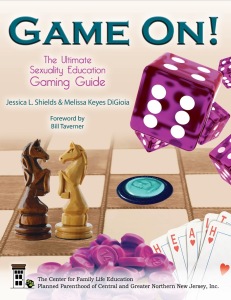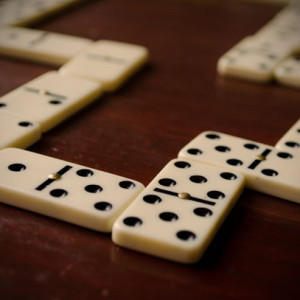 Continuing with our Game On! week, today I’m talking about the fifth game in the manual: Private One: The What, Where, and How of Privacy. Privacy is such an important issue for all people. Learning the art of disclosure is often a life-long process. There are so many ways to go with this topic, I wasn’t sure where this particular activity would lead.
Continuing with our Game On! week, today I’m talking about the fifth game in the manual: Private One: The What, Where, and How of Privacy. Privacy is such an important issue for all people. Learning the art of disclosure is often a life-long process. There are so many ways to go with this topic, I wasn’t sure where this particular activity would lead.
The short description of this activity is: In this card game designed for youth with special needs, participants will review aspects of privacy including places, behaviors, and body parts.
I do not work frequently with people with special needs, but I love learning about new populations and techniques!
Private One:
The What, Where, and How of Privacy
OBJECTIVES:
By the end of the session, participants will be able to:
- Name at least one private place.
- Identify one hygiene, personal care behavior, or form of sexual expression that should occur in a private place.
- State at least one part of the body that is considered private.
RATIONALE:
Undressing, self-genital touch or stimulation, or menstrual hygiene care in public locations are examples of missteps that youth with autism spectrum disorders and intellectual disabilities may take. This may be the result of delays in cognition and modesty, an inability to interpret the world from a view other than their own, and a lack of understanding of socio-sexual rules. Youth with such disabilities often take longer to learn and apply new information and skills. Concrete, explicit, repetitive instruction about the body part names and functions, personal care, and the appropriate private locations for behaviors involving the sex organs are essential for their personal and social success. In this lesson, participants will review these important aspects of privacy by playing a matching game so they will be more prepared to recognize when privacy is necessary.
Note: This session will review the concept of privacy, names of sexual anatomy, and hygiene. Provide a more in depth discussion of these concepts including anatomical function and pubertal changes prior to using this lesson.
Private One is a matching game. The instructions include the classroom and game procedure as well as instructions on how to make the cards for the matching game.
It’s rare that a lesson touches me deeply like this one has. The thing that strikes me most about this lesson description is the love and care that shines through in it. The authors (although unattributed) see the importance of discussing privacy in a step-by-step fashion for people to whom privacy does not come naturally. I have a few people in my life who need this kind of instruction, but I wasn’t prepared to provide it for them before reading through Private One. I have a pretty clear idea of how to move forward now, though, and I’m grateful for it!
If you do work with people of any age who struggle with understanding cultural expectations around bodies and privacy, this is a fantastic lesson to fall back on. Had I known it was here, I would have bought this manual years ago!






